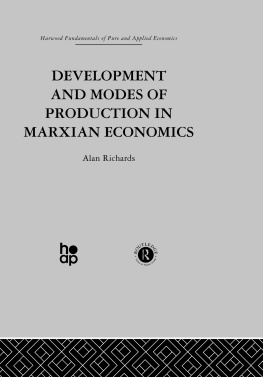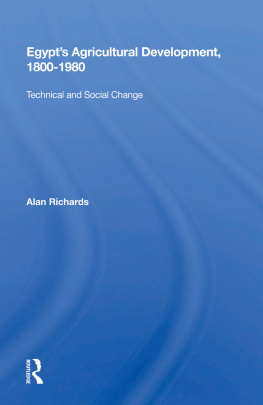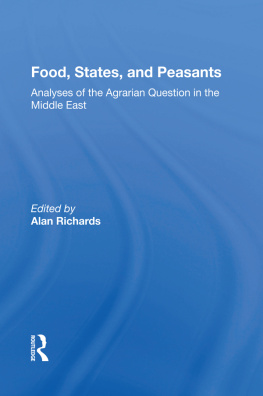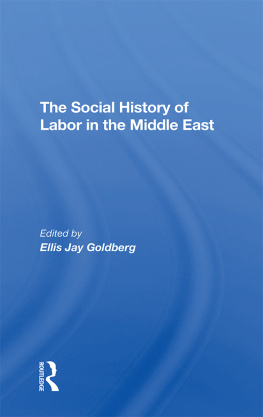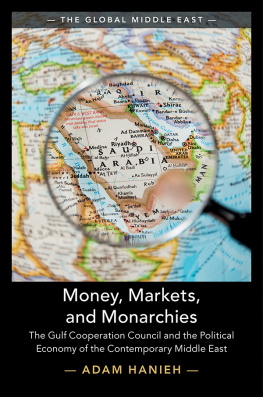A
POLITICAL
ECONOMY
OF THE
MIDDLE EAST

Westview Press was founded in 1975 in Boulder, Colorado, by notable publisher and intellectual Fred Praeger. Westview Press continues to publish scholarly titles and high-quality undergraduate- and graduate-level textbooks in core social science disciplines. With books developed, written, and edited with the needs of serious nonfiction readers, professors, and students in mind, Westview Press honors its long history of publishing books that matter.
Copyright 2008, 2014 by Westview Press
Published by Westview Press,
A Member of the Perseus Books Group
All rights reserved. No part of this book may be reproduced in any manner whatsoever without written permission except in the case of brief quotations embodied in critical articles and reviews. For information, address Westview Press, 2465 Central Avenue, Boulder, CO 80301.
Find us on the World Wide Web at www.westviewpress.com.
Every effort has been made to secure required permissions for all text, images, maps, and other art reprinted in this volume.
Westview Press books are available at special discounts for bulk purchases in the United States by corporations, institutions, and other organizations. For more information, please contact the Special Markets Department at the Perseus Books Group, 2300 Chestnut Street, Suite 200, Philadelphia, PA 19103, or call (800) 810-4145, ext. 5000, or e-mail .
The Library of Congress has catalogued the Third Edition as follows:
Library of Congress Cataloging-in-Publication Data
Richards, Alan, 1946
A political economy of the Middle East / Alan Richards, John Waterbury. 3rd ed.
p. cm.
Includes bibliographical references and index.
1. Middle EastEconomic conditions1979 2. Middle EastEconomic policy. 3. Working classMiddle East. 4. Middle EastPolitics and government1979 I. Waterbury, John. II. Title.
HC415.15.R53 2007
338.956dc22
2006037317
ISBN 978-0-8133-4929-9 (updated 2013 edition e-book)
10 9 8 7 6 5 4 3 2 1
CONTENTS
TABLES
FIGURES
The first edition of this book was published sixteen years ago, and the second appeared in 1996. During the interim, much has changed, not least the authors themselves. John Waterbury has been President of the American University in Beirut since 1998. Serving the vital and influential community of students, faculty, staff, and alumni of that venerable institution is, to say the least, a full-time job. Accordingly, John did not have the time to participate in preparing this third edition. Readers therefore please note: Any differences between this and previous editions are my responsibility alone! Urged on by the publishers and by some younger colleagues (you know who you are!), for better or for worse, I agreed to undertake the task of preparing a third edition.
Since the second edition appeared, not only the region but also Americans perceptions of and involvement in the region have undergone considerable change. The trauma of September 11, 2001, spawned a huge public debate, much of it sadly ill informed, about the region and Americas role in it. The events of that day came as a particularly rude shock after a decade of American triumphalism following the demise of the Soviet Union. The responses have not always been wise. As of this writing, the American military adventure in Iraq has lasted longer than any American war in the past one hundred years.
As this edition goes to press, there is growing public uneasiness with the muscular, largely military approaches of the United States to the region since 9/11. We believe that the public is beginning to grasp a lesson of this book (which they have certainly not read), namely, that the problems of the region are deep, structural, and entrenched. They do not, therefore, readily lend themselves to any simple solution, whether emanating from inside the Beltway or from dissident Muslim preachers. This edition, like previous editions, is intended to provide readers with an understanding of the complexity and the depth of the regions long-term developmental problems.
In the introductory chapter we note how two great games have long been played in the region. The first game is the game of nations or international relations; the secondthe subject of this bookis the political economy of development. These games have always been interrelated, as we noted in previous editions. However, since 9/11 their interconnection has become increasingly visible. For example, the president of the United States proclaimed a Greater Middle East Initiative, ostensibly to stimulate the economies of the region, since it was increasingly understood that rising unemployment and stagnant economies did little to foster the legitimacy of existing regimes. American officials, pundits, and analysts have also made much of the democracy deficit of the region and have, at least rhetorically, advocated democratization as a solution to the regions many problems.
While these two games are intertwined, they are linked in ways that are often obscured in many discussions of them. The interaction of the forces of demography, health, education, urbanization, economic policymaking, natural resource scarcity, and political legitimacy is an extremely intricateand sometimes highly lethaldance. It is far too easyand increasingly dangerousfor outsiders to imagine that, instead of this complex minuet, the region has embarked on a simple, short jog down a clearly lit path. It is unhelpful, to say the very least, to assume that all we have to do is remove a few miscreants and provide better lighting, and then everyone will naturally run straight down the road we have helped to pave. Modernization theorythe view that all societies will inevitably wind up the same as they go through the processes of economic development and structural changeis, regrettably, very much alive in American political discourse. We hope that readers of this book will understand how delusional such a perspective continues to be.
There are factors of continuity, as well as differences, within the trends in the political economy of development in the Middle East, which we observed in earlier editions. The rise of the largest, best-educated, and most urbanized generation of young people in the regions history, while visible earlier, has become increasingly evident. This phenomenon is documented in we shall see that the demographic transition is now well advanced in many countries in the region; indeed, one country (Iran) experienced one of the fastest transitions in the historical record. Yet in other countries, particularly those of the Arabian Peninsula and some West Asian Arab countries, fertility remains stubbornly high. Even here, however, there are signs of improvement, as the percentage of young women receiving a basic education continues to increase.
Even where fertility has fallen, however, it has done so only recently and from high levels. Consequently, the labor force continues to grow very rapidly in most countries. This growth will slow, but only gradually. The result is a tidal wave of young people, better educated () than ever before, who are increasingly frustrated. Their discontent is not limited to economic matters. Like young people everywhere, they are deeply concerned with questions of authenticity and fairness and are disillusioned by their governments failures on these counts. Moreover, they are very concerned about the way outside forces have intervened in the region. This interaction of demographic and economic problems with issues of political legitimacy and authenticity is one of the most important ways the two great games are intertwined in todays Middle East.
Next page

